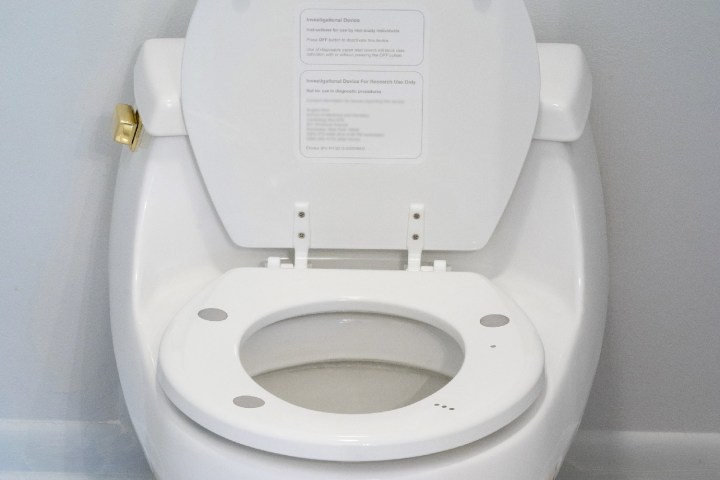
Today’s smart toilets (yes, that’s a thing) analyze what goes into toilet bowls, rather than the people sitting on top of them. That’s something a new device being developed by researchers from the Rochester Institute of Technology wants to help change. They’ve created a smart toilet seat that’s able to potentially play a crucial role in monitoring the heart health of users during those several minutes each day when they’re, er, dropping off friends at the pool.
“This cardiovascular monitoring system is designed to detect deterioration early, while bypassing the need for patient adherence, by using a unique form factor: a toilet seat,” Nicholas Conn, founder and CEO of the spin-off company Heart Health Intelligence, told Digital Trends. “The seat is directly enabled by advanced proprietary algorithms, and captures over nine clinically relevant measurements. It incorporates a single-lead electrocardiogram (ECG) for measuring the electrical activity of the heart, a photoplethysmogram (PPG) for measuring blood oxygenation and localized pulse timing, a ballistocardiogram (BCG) for measuring the mechanical forces associated with the cardiac cycle, and a body weight sensor.”
Rather than requiring users to install a whole new toilet, the fully automated, cloud-connected seat can be retrofitted on top of existing bowls. In a recent test involving 38 healthy volunteers and 111 heart patients at the University of Rochester Medical Center, the seat was found to be capable of producing heart measurements as effectively as hospital-standard monitoring equipment. The results are described in a journal article published in the JMIR mHealth and uHealth.
“The next step for the project is to demonstrate the clinical utility of the system by deploying to the homes of [heart failure] patients after discharge, and providing data to heart failure management teams to enable better disease management and improve outcomes, such as the functional status of these patients,” Conn continued. “I am currently working on commercializing this technology through my startup, Heart Health Intelligence, which will involve bringing the device through the FDA approval process, where each measurement will need to be validated on a larger and more diverse population.”
Editors' Recommendations
- The 5 weirdest smart home gadgets of 2023
- Kohler’s 2023 bathroom lineup at CES includes lots of heated toilet seats
- How smart lighting affects your health
- Sleep Number’s New 360 Smart Bed monitors and improves sleep health as you age
- The Chillax Baby Mood AI Smart Monitor focuses on privacy


